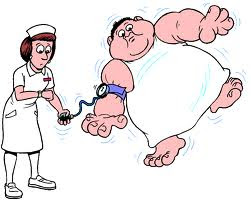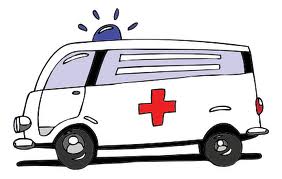This time of year is the best to crawl underneath a blanket with your favorite comfort food and indulge. Unfortunately, these tantalizing treats spell trouble for your waistline. But can you still indulge in your favorite cold weather foods without feeling guilty? Of course! Here are the top five comfort foods recreated in a healthy way:
5.) Grilled Cheese
Instead of the classic white bread and american cheese, try this updated caprese style version!2 slices whole grain bread
3 oz fresh mozzarella cheese
2-3 slices tomatoes
2-3 fresh basil leaves
olive oil spray

Assemble the cheese, tomatoes, and basil on the bread. Spray a hot pan with the olive oil spray. Place the assembled sandwich on the hot pan, and brown the bread on both sides.
Serving Size = 1 sandwich
Total Calories - 362 kcal
Fat - 16g
Carbohydrates - 27g
Protein - 28g
Sodium - 746mg
4.) Pizza
Before picking up the phone and ordering a pizza for delivery, try making one yourself with this thai chicken version!
1 14-in whole wheat pizza crust*
Pizza Sauce:
1/2 cup creamy peanut butter
1/4 cup low sodium chicken broth
3 tbsp soy sauce
1 1/2 tbsp light brown sugar
1 1/2 tbsp minced ginger
2 tbsp lime juice
1 tsp chili garlic paste (or hot sauce)
1 tsp curry powder
Toppings:
4 cups shredded cabbage
1 cup bokchoy
1 cup shredded carrot
12 oz cooked chicken breast strips (approximately 3 small chicken breasts)
3 jalapeno peppers, seeded and diced
1 cup shredded swiss cheese
1 tbsp sesame seeds
Preheat oven to 350 degrees F. Combine all ingredients for the pizza sauce in a food processor. Process until smooth. Spread approximately 1/2 cup of sauce on pizza crust. Add toppings and bake about 10-15 minutes. Let cool and enjoy!
Serving Size = 2 slices of pizza (when the pizza is cut into 8 slices)
Total Calories - 587 kcal
Fat - 32g
Carbohydrates - 47g
Protein - 60g
Sodium - 962mg
*Substitute for whole wheat pizza dough, if available, or try making your own pizza dough to control the nutrition even more.
3.) Tomato Soup
Try this great zesty homemade tomato soup recipe that is a cinch to make, as opposed to the plain old Campbell's canned soup.
2 tbsp olive oil
2 tbsp unsalted butter
1 white onion, diced
2 celery stalks, diced
1 can chopped tomatoes (28 oz)
1 can crushed tomatoes (28 oz)
6 cups chicken broth
1 tsp pepper
1 tsp red pepper flakes
2 tbsp chopped fresh dill
2 tbsp chopped fresh parsley
1 cup skim milk
Heat oil and butter in saucepan over medium heat. Add onion and cook and stir for about 10 minutes. Add carrots and celery and cook and stir for about another 10 minutes. Stir in the chopped and crushed tomatoes with their juices. Add the pepper, crushed red pepper, and chicken broth, and bring to a low boil. Reduce the heat and simmer, uncovered, for about 30 minutes, stirring occasionally. Remove the soup from the heat and stir in the dill, parsley, and milk.
Serving Size = 1 1/2 cups
Total Calories - 150 kcalFat - 7g
Carbohydrates - 18g
Protein - 6g
Sodium - 713mg
2.) Burger
Everyone loves a big, juicy burger. Check out this healthier burger recipe, made with lean ground turkey and great greek flavors!
1 lb lean ground turkey
1 tsp minced garlic
1 1/2 cups chopped chopped, fresh spinach (or 3/4 cup frozen, drained spinach)
1 tsp extra virgin olive oil
1/2 cup crumbled feta cheese
salt and pepper to taste
8 whole wheat hamburger buns
8 tomato slices
8 cucumber slices
Sauce:
1 cup fat free plain yogurt
1 cup low fat sour cream
3 tbsp lemon juice
1 tbsp minced garlic
1 tbsp fresh dill, chopped
salt and pepper to taste
Saute garlic, onion, spinach, and extra virgin olive oil in a shallow pan until fragrant. Take off the heat and let cool. Combine the garlic mixture, feta cheese, dill, salt, and pepper with the ground turkey, mixing evenly. Form turkey mixture into 8 patties and grill until cooked through (temp at 165 degrees for 15 seconds).
Combine the yogurt, sour cream, lemon juice, minced garlic, chopped dill, salt, and pepper for the sauce. Serve burger on a whole wheat hamburger bun with a tomato and cucumber slice, and top with sauce.
Serving Size = 1 burger, 2 tbsp sauce
Total Calories - 265 kcalFat - 12g
Carbohydrates - 23g
Protein - 17g
Sodium - 380mg
1.) Macaroni and Cheese
Macaroni and cheese can be the best comfort food for a gloomy day, and this recipe has some great nutritious additions, but keeps the great taste!3 tbsp dry breadcrumbs
1 tsp extra virgin olive oil
1/4 tsp paprika
1 16-ounce or 1 10-ounce package frozen spinach, thawed
1 3/4 cups lowfat milk, divided
3 tbsp all-purpose flour
2 cups shredded extra-sharp cheddar cheese
1 cup low fat cottage cheese
1/8 tsp ground nutmeg
1/4 tsp salt
ground pepper to taste
8 ounces whole wheat elbow or penne macaroni (2 cups)

Put a large pot of water on to boil. Preheat oven to 450 degrees F. Coat an 8-inch-square (2-quart) baking dish with cooking spray.
Mix breadcrumbs, extra virgin olive oil, and paprika in a small bowl. Place spinach in a fine-mesh strainer and press out excess moisture.
Heat 1 1/2 cups milk in a large heavy saucepan over medium-high heat until steaming. Whisk remaining 1/4 cup milk and flour in a small bowl until smooth; add to the hot milk and cook, whisking constantly, until the sauce simmers and thickens, 2 to 3 minutes. Remove from heat and stir in shredded cheddar cheese until melted. Stir in cottage cheese, nutmeg, salt, and pepper.
Cook pasta for 4 minutes, or until not quite tender (al dente). Drain and add to the cheese sauce; mix well. Spread half the pasta mixture in the prepared baking dish. Spoon the spinach on top. Top with the remaining pasta; sprinkle with the breadcrumb mixture.
Bake the casserole until bubbly and golden, 25 to 30 minutes.
Serving Size = 1 1/2 cups
Total Calories - 576 kcal
Fat -22g
Carbohydrates - 63g
Protein - 37g
Sodium -917mg
Comfort foods can be deliciously healthy!!






































